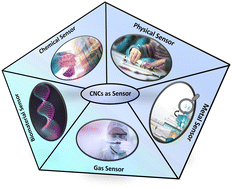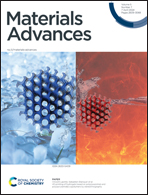Recent advances in cellulose nanocrystals-based sensors: a review
Abstract
Cellulose nanocrystals (CNCs) continue to pique the interest of researchers for sustainable development. These biopolymeric assemblies are significant because of their outstanding physical and chemical characteristics, inherent renewability, sustainability, and abundance. Given their large surface area, high aspect ratio, and abundant reactive surface groups, they are ideal for making probes for sensing applications. The present review highlights current advancements in developing CNCs-based sensors for sensing hazardous gases, metals, and solvents. It also discusses how CNCs-based sensors have evolved over the last decade. The review summarizes the methods mentioned in the literature for constructing and altering CNCs-based substrates using responsive compounds. Smart CNCs-based sensing probes for monitoring metals, chemicals, hazardous gases, humidity, and physical stimuli have received special attention. Several of the latest developments in smart sensors have also been evaluated and described. The review also includes the history of CNCs-based sensors, their evolution in the last decade, the challenges faced in their fabrication, and the future prospects of such sensing probes.

- This article is part of the themed collections: Popular Advances, Recent Review Articles and Advanced materials for sensing and biomedical applications


 Please wait while we load your content...
Please wait while we load your content...